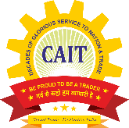Less Cash Economy
Way Forward to Cashless Economy
The awareness campaign includes “Master Your Card”, a community empowerment program helping small businesses to get most value from digital payment technology. The underlying idea for such a campaign is to educate traders that Cash is costly and payment cards offer more values.
Retail payments environment in India is largely dominated by cash. Merely 4% of all transactions are conducted digitally and rest all transactions in cash and cheques . It is wrong conceived notion that Cash is free. The huge cost of paper & printing of currency about 20 thousand crores per annum is never thought of. Beside millions of hours spending on obtaining Cash and subsequent efforts in its handling is also not taken on board. 90% of India’s labor market plus firms which accounts for 40% of GDP operate in the informal economy and most people still lack the means to non-cash payments but however, the trend is becoming positive due to various financial inclusion initiatives taken by the Union Government which is evident from the fact that in 2011 only 35% of Indians were having bank accounts which has risen to 53% in year 2014.
The non-corporate sector of India is consists of about 5.77 crore business establishments providing employment to nearly 46 crore people and contributing 45% to National GDP but access to credit for this sector is low and if obtainable it comes with high interest rates. However to meet this challenge, Prime Minister Mr. Narendra Modi launched Micro Units Development & Refinance Agency (MUDRA) on 8th April,2015 through which this sector will get easy loans at an affordable rate of interest. The CAIT has played a key role in MUDRA launch.
Beside this the sector is gripped with low use of technology that can improve cash flow and productivity. It also lack of access to global markets. The digital payments landscape is limited but still emerging. Only 600 thousand accept digital payments currently. The Government needs to bring a support policy to equip the sector with technology.
There are about 210 million Individual Bank Accounts. According to RBI total number of credit cards issued by 55 scheduled Banks in India is 19.9 million as of October,2014 and so far 441 million Debit Cards have been issued by Banks. As per report titled The Cost of Cash in India electronic transactions increased from 1.2 billion in 2011-12 to 1.7 billion in 2012-13, a growth of 36% and the total value of electronic transactions increased from Rs.967.52 trillion to Rs.1212.37 trillion over the same period, a growth of 25.31%.
Both CAIT & MasterCard are of the considered opinion that encouragement to this sector towards digitalisation of its business format will be a step forward in making “Digital India” vision of Prime Minister a reality. Such a step will usher into cashless society and bring informal sector into formal sector which will yield more revenue to the Government and certainly not only economy but GDP will also increase substantially.
Given the current upsurge in electronic transactions, CAIT has tied up with MasterCard to promote card payments and digital technologies in small scale businesses. This partnership is one in a series of steps we have taken to ensure that the trading community stays at par with an increasingly digitized world. We are excited to join hands with MasterCard to help our traders realize the full potential of electronic payments and start operating in a digitized manner with ease and efficiency.”

Financial Inclusion

Smart Cities

FDI in Retail Trade





